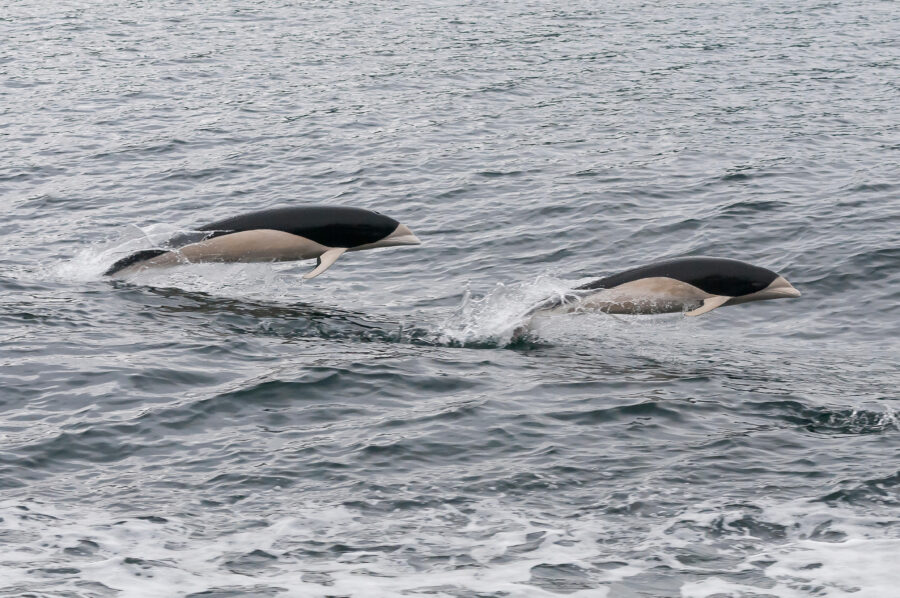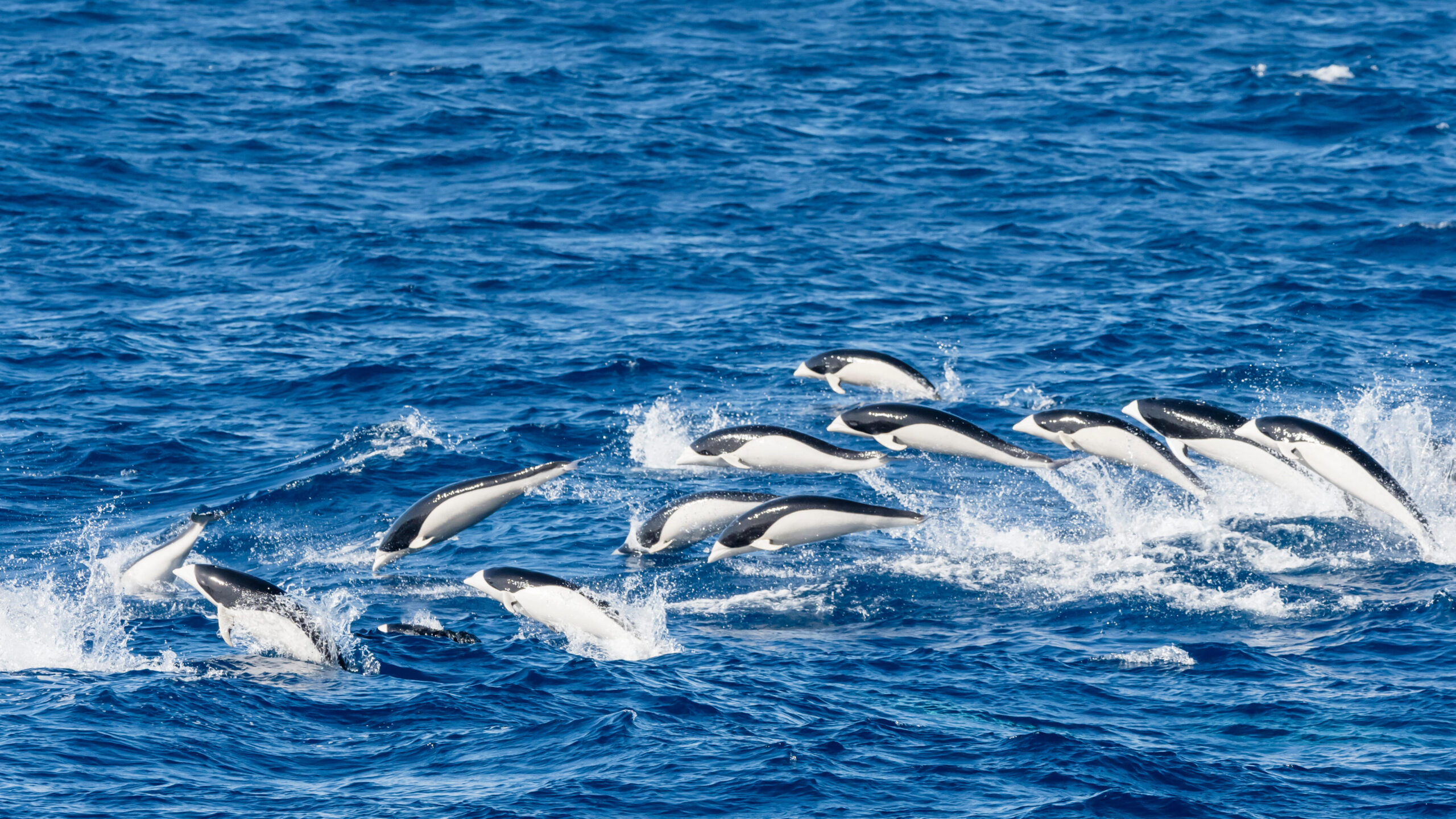The southern right whale dolphin looks like a torpedo

Bec Crew
Bec Crew

In fact, the southern right whale dolphin (Lissodelphis peronii) is the only species of dolphin in the Southern Hemisphere that doesn’t have a dorsal fin. It’s how the species got its rather inelegant name – it’s named after right whales (genus Eubalaena), which are also bereft of dorsal fins.
You might think that this feature would give the southern right whale dolphin a speed advantage, but… not really. They can hit a swimming speed of around 22 km/h, which, don’t get me wrong, is very fast, but compared to some of the their quicker cousins, it’s a little middling.
Take Dall’s porpoise (Phocoenoides dalli), for example. These nuggety little speed-freaks from the North Pacific can hit swimming speeds of 54 km/h. And the common dolphin (delphinus delphis) is reportedly able to go just a little bit faster, up to 60 km/h.
Interestingly, there seems to be a hard limit on the swimming speeds that dolphins can hit comfortably. Researchers have discovered that a phenomenon known as cavitation, wherein microscopic bubbles form around a dolphin’s beating tail, collapsing and producing a shockwave, actually hurt dolphins that are moving at such speeds. (Yes, cavitation is the same force that peacock mantis shrimps use to demolish their prey!)
What southern right whale dolphins lack in relative speed, they make up for in friends. These dolphins have been known to travel in groups of more than 1,000 individuals. They’ll even team up with hourglass dolphins, dusky dolphins (Lagenorhynchus obscurus), and pilot whales.
A southern right whale dolphin pod is quite a sight to see:

Southern right whale dolphins are found in cool temperate to subantarctic waters of the Southern Hemisphere. Australian sightings are rare, because that they don’t often venture near the shore, but they have been recorded south and south-westward of Tasmania, in the Great Australian Bight and off south-western Australia.
Sadly, in 2019, a dead southern right whale dolphin washed up on a beach at Port Fairy in Victoria. In 2020, another one appeared in the same place, and it remains a mystery as to why. In fact, a lot about these dolphins remains a mystery to researchers, because they tend to stay very far out to sea, in deep offshore waters.
It’s what makes encounters like the one filmed below so special. What a truly magical experience for anyone lucky enough to see these beautiful creatures in motion:

